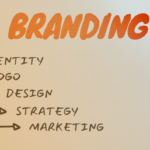Content Marketing Trends 2023
Back in 1996 when the internet was still a youthful teenager, Bill Gates declared that “Content is King”. This year, however, as the digital world continues to enjoy a serious growth spurt, it is even more important. So spare a thought for those poor content marketing teams forced to rely on a rapidly evolving ecosystem that pings and syncs and ranks and notifies and data captures 24/7.
It’s not easy, especially as the customer is zigzagging too, constantly experimenting with new platforms and proving loyalty is now short-term. It is a dynamic and testing space where experimentation and risk-taking can reap rewards, but one thing never changes. Success relies on a good story well told.
In 2023, the trick is to achieve a balance between creating trusted content across the channels you know while creating more experimental content for new ones. It’s not a trick of course. More a judgement call, or guesswork, a strategic gamble… There’s no doubt, however, that those who adapt and adopt new ideas early can get first mover advantage in new digital spaces.
It’s time to expect the unexpected. Youthful and superficial TikTok is aiming at business customers. Wordy and conservative LinkedIn is heading towards video. From short-form tweets and immersive videos to long-form articles and live video webinars, content has never been more interesting and varied.
And, with the hidden hand of Artificial Intelligence (AI) increasingly shaping our search results and social media feeds, the rewards for getting it right have never been higher. Here are five trends that may help to shape your content strategy in the year ahead:
1. Short and sweet video messages
Consumers’ attention spans are dropping, so businesses need to refine their messages and develop simple soundbites that grab attention, especially on mobile devices where short and snappy videos rule. Reels – brief videos prized on TikTok and Instagram and others – are growing fast. Especially immersive ones. All social platforms increasingly prioritise video content. These brief clips are perfect as an appetiser, a link to more in-depth stories and concepts. It’s a good time to experiment and tinker with the format for both organic and paid-for strategies.
Paragon says: Turn your marketing and brand stories into nuggets – punchy sentences and soundbites. Successful videos tend to be around 15 seconds long. A surprise twist at the end helps. Creating your own audio tracks or finding funky sounds can help them go viral.
2. Platform 1. Or 2. Or 3…
Be ready to switch platforms as customers have never been more fickle. Facebook and Twitter are still used by many – especially older consumers – but are beginning to lose out to younger pretenders. TikTok is boosting the simplicity of its business tools. Instagram may have started with great pictures but today it’s all about video and reels while Linkedin is expected to account for up to 25% of B2B advertising next year.
Paragon says: Start experimenting with new content – especially short videos – and learning your way around these evolving platforms. Jump in early and search hard for new opportunities.
3. Meta is better… or is it?
There is a lot of geeky chatter and excitement about the growth of the metaverse – an expanding collection of immersive virtual experiences taking place online – but it is still very early. Most businesses don’t have any practical experience of what works. Or any idea of its potential ROI. But that doesn’t mean they should not start learning. Nike – perhaps unsurprisingly given their tagline of “Just Do It” – is up and running. Nikeland, its online purpose-built metaverse space that allows its fans to meet, socialize, play games and engage with a whole range of brand experiences, has already had more than 20 million visitors. Soon, for example, consumers will be able to design their own trainers and sell them.
Paragon says: Keep a close eye on what’s happening. Ask what your business can offer that is immersive. Then start the process of developing content. This, to some extent at least, is the future.
4. Exploit the creator economy
Brands need to fill out their ever-more demanding content calendars with creative, engaging and timely content, but often do not have sufficient resources or knowledge. One solution is to tap into the powerful creator economy – the rapidly growing number of influencers with huge armies of followers – which has direct access to consumers. Anyone from employees and consumers to subject experts can help. It is relatively easy to search through social media – from light-hearted Instagram to more heavy-hitting LinkedIn – to find influencers who can help tell your story.
Paragon says: Ask how influencers can help your brand. Product reviews? Authoritative op-eds? This is becoming a competitive space so be prepared to quickly establish an official partnership if the relationship works. You want to protect valuable assets.
5. And don’t forget the beauty of long-form content!
Short-term content may be all the rage, but it is also limited in what it can achieve. If you need to present a complex or sophisticated product or service then a long-form piece of content is critical. Blogs, ebooks and webinars are also very good for boosting SEO and backlinks. Podcasts and live streaming are also growing fast.
Paragon says: Create shorter posts to enhance brand awareness and combine with links to more informative long-form versions. Complementary short and long-form content is a powerful combination.
The good news is that today’s customers are demanding but responsive and appreciative. They want to know all about your brand as well as your products and that means you need to be transparent and authentic. Your ethos matters. If you’d like to talk to us about your story and creating a content calendar, we’d love to hear from you.



